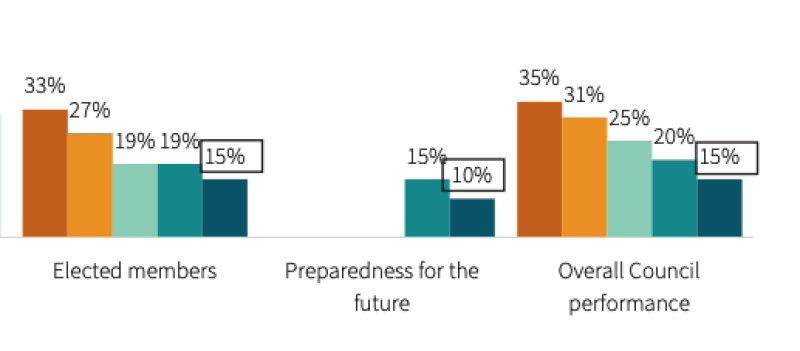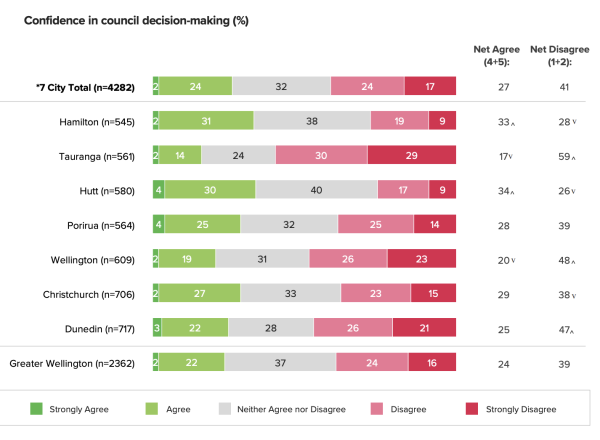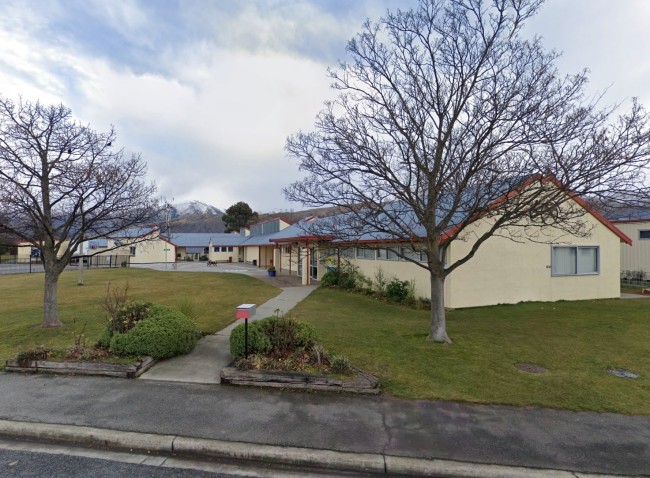
QLDC survey: profound concern over council and councillor performance
In its annual quality of life survey, the Queenstown Lakes District Council has seen yet a further drop in resident satisfaction with the performance of the council itself and elected councillors.
Only 15 percent of respondents were either very satisfied or satisfied with the council’s overall performance with the results being the same for the performance of elected councillors.
Last year the rating was 20 percent for the council and 19 percent for elected members.

The last five years' results - from 2019 on the left of each chart to 2023 on the right, with the percentage of people saying they are either satisfied or very satisfied with QLDC.
The results may be the worst in New Zealand but it is hard to measure survey against survey due to the different survey methodologies used by different councils.
Here's the most comprehensive multi-council comparison available - from 2022.

Only Tauranga (2022) has come close to a 15% rating (16%) - and in that case commissioners were put in control by the Government due to chronic council dysfunction.
Mayor Glyn Lewers says while it’s heartening the community has a high level of pride in the district and is positive about QLDC’s community facilities such as parks, libraries and sports and recreation venues, the lower levels of satisfaction are something the council is taking very seriously.
“It’s been a tough few years for our district’s communities and more widely across the country. We’ve had multiples crises, infrastructure delays and significant project cost increases, and ballooning costs of living that are hitting many people hard. It’s no surprise some people are feeling challenged. I think it’s a mark of frustration based on longer commutes, traffic cones, public transport issues and affordability, not to mention the national and global challenges we face.
“The results of this survey reinforce that we have work to do and I want to be clear that council is listening and hearing these concerns. We have very much been in a delivery phase but are moving to an even greater focus on community and on service.
“Whether it’s the hundreds, if not thousands, of interactions between elected members, staff and community members that happen every day, the facilities we provide such as playgrounds and walking tracks, or essential services like animal control, waste management, or resource consenting; it’s all valuable feedback and allows us to keep focusing on improving."
The Quality of Life Survey received 1,767 responses from residents and 749 responses from non-residents. It was open from October 16 until November 19 last year.
Here's a summary of all the summary results, in the order presented by the council:
- 72 percent report good or extremely good quality of life
- 71 percent report mostly good or excellent ratings of physical wellbeing
- 61 percent report mostly good or excellent ratings for mental wellbeing
- 75 percent of residents are satisfied with the range of community facilities (84 percent of non-residents were also satisfied with the range of community facilities in the district)
- 63 percent of residents agree or strongly agree that they feel a sense of pride in the district
- 21 percent worry about having a steady place to live in the future
- 15 percent are unable to always heat their home adequately, with cost reported as the main reason
- 30 percent report having a sufficient level of disposable income, with 21% unable to cover expenses or without any disposable income
- 45 percent agreed there was a long-term career path for them in the district, while 24 percent disagreed
- 39 percent report no barriers to accessing medical professionals
- 34 percent are satisfied with the celebration of tangata whenua and Māori culture
- 91 percent rated their neighbourhood as safe for themselves and their families, while 66 percent said they lived in a welcoming community
- 15 percent are satisfied with elected members, 10 percent with council’s preparedness for the future, and 15 percent with overall council performance. More residents satisfied than dissatisfied with the information they receive and opportunities to have their say
- 12 percent of residents believe public transport meets the needs of residents
While 21 percent of residents thought their general quality of life had improved over the last 12 months, 31 percent responded that it had decreased. The cost of living challenge being seen throughout Aotearoa New Zealand was reported as a major contributory factor in declining quality of life sentiment.
Twelve percent of respondents said that the council's poor performance was the main reason for a general decline in their quality of life, with the cost of living, housing and income being the three main reasons.

The main reasons given for a decline in the quality of life.
Other key issues influencing residents’ wellbeing included rates and deficits in transport and health infrastructure.
You can read the full survey here.





























